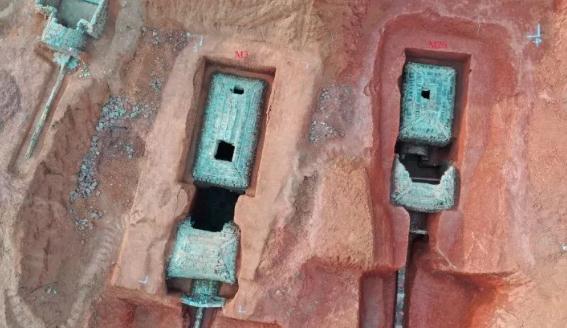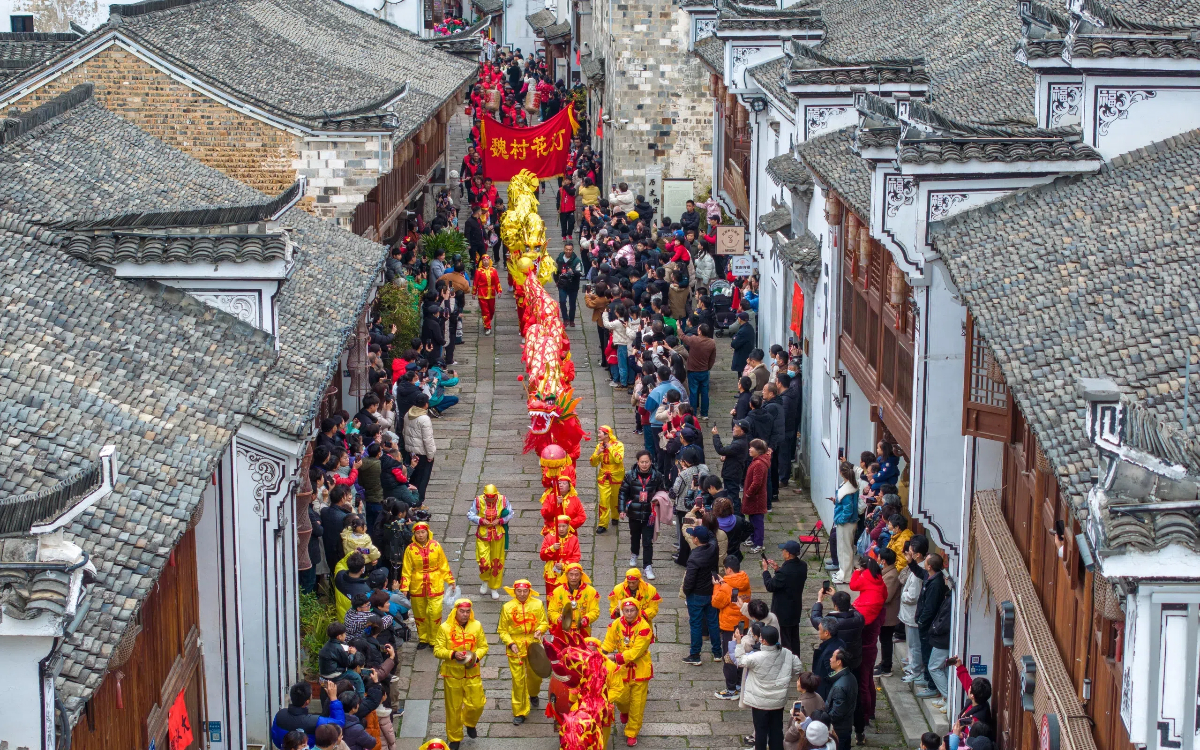Tombs unearthed in area planned to build zoo

An aerial view of two Western Jin Dynasty tombs in Shaoxing, Zhejiang province. [Photo/WeChat account: sxfabu]
Researchers have discovered that the two ancient tombs recently excavated in Shaoxing, East China's Zhejiang province were built in the Western Jin Dynasty (265-316), local media reported on July 21.
A large-scale excavation project was launched by the Keqiao Museum and the Zhejiang Archaeological Institute near Lanting village to make space for the construction of a zoo.
To date, the project has excavated 60 tombs, including two intact tombs M3 and M26.

The interior of M3. [Photo/WeChat account: sxfabu]
Chinese character carvings in M3 and M26 state that the owners were both buried in 299. The characters were carved in zhuan and li styles and will serve as valuable examples in the study of the evolution of Chinese calligraphy.
In the Eastern Jin Dynasty (317-420), court minister and calligrapher Wang Xizhi (303-361) composed Lanting Xu, or A Preface to the Orchid Pavilion Poems, which is considered the greatest masterpiece in Chinese calligraphy, at Orchid Pavilion near today's Lanting village in Shaoxing.
The work not only earned Wang the reputation of "the sage of calligraphy" but also made the place renowned for being the "calligraphy Mecca".
According to the excavation team, the tombs have delicate designs despite the lack of machinery in the West Jin Dynasty. Further research on the tombs and unearthed objects would shed light on the social and economic conditions of that period.

Objects buried with the tomb owners. [Photo/WeChat account: sxfabu]





 play
play